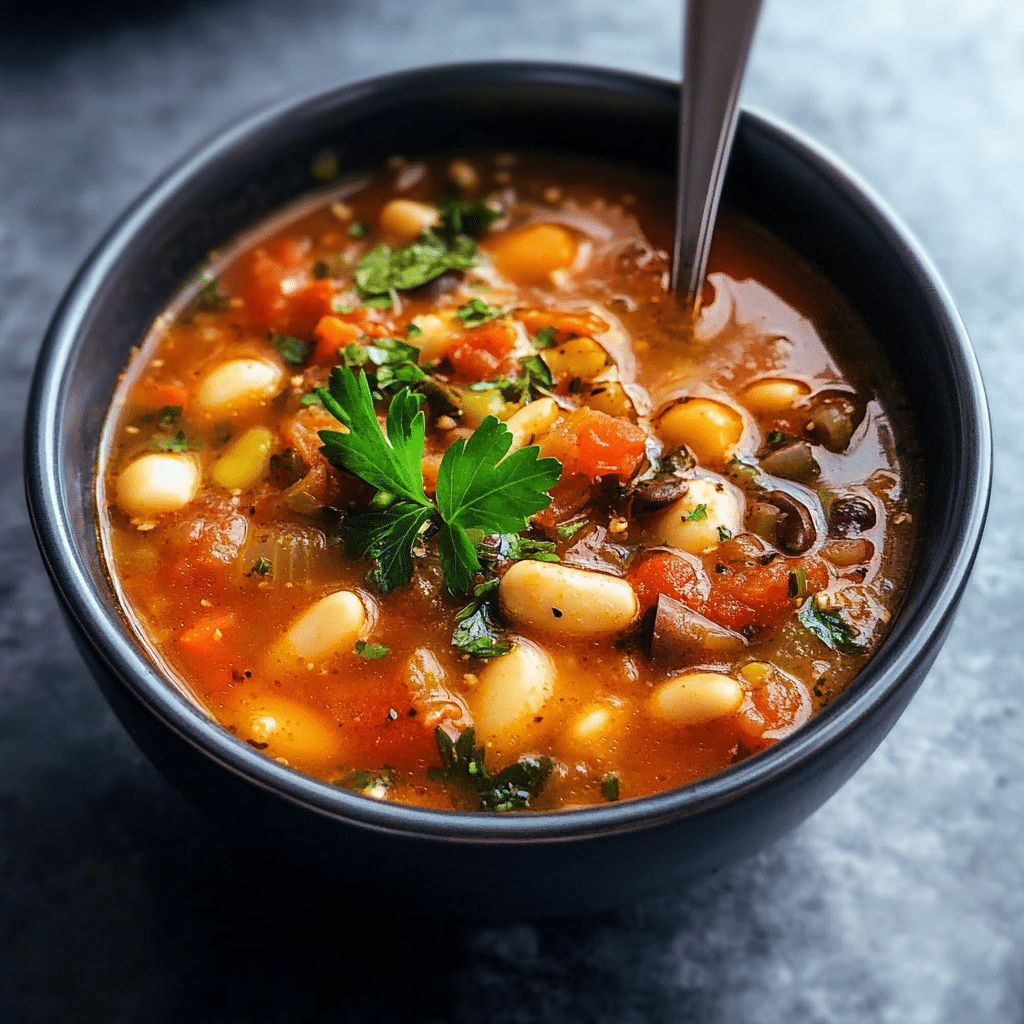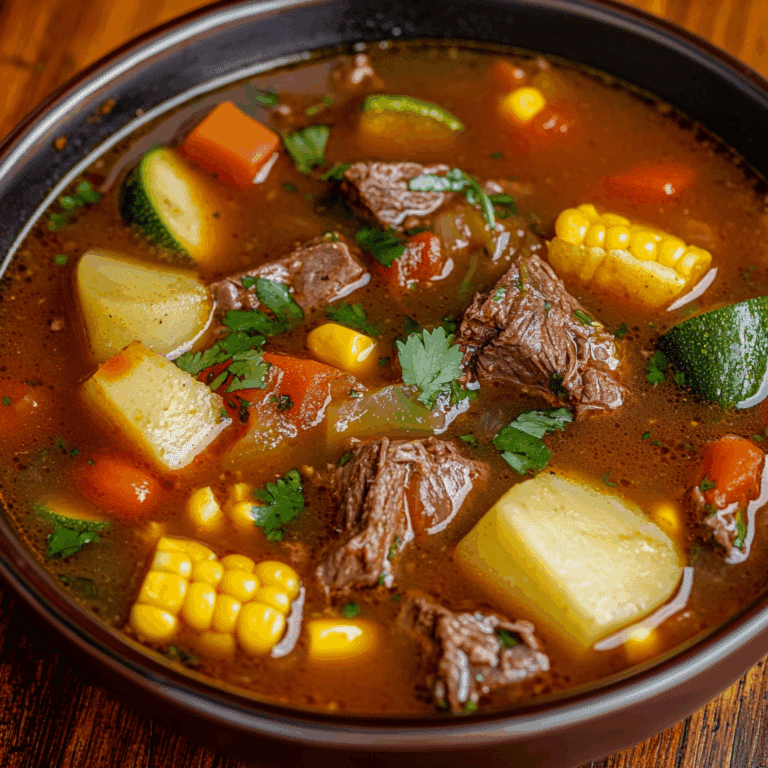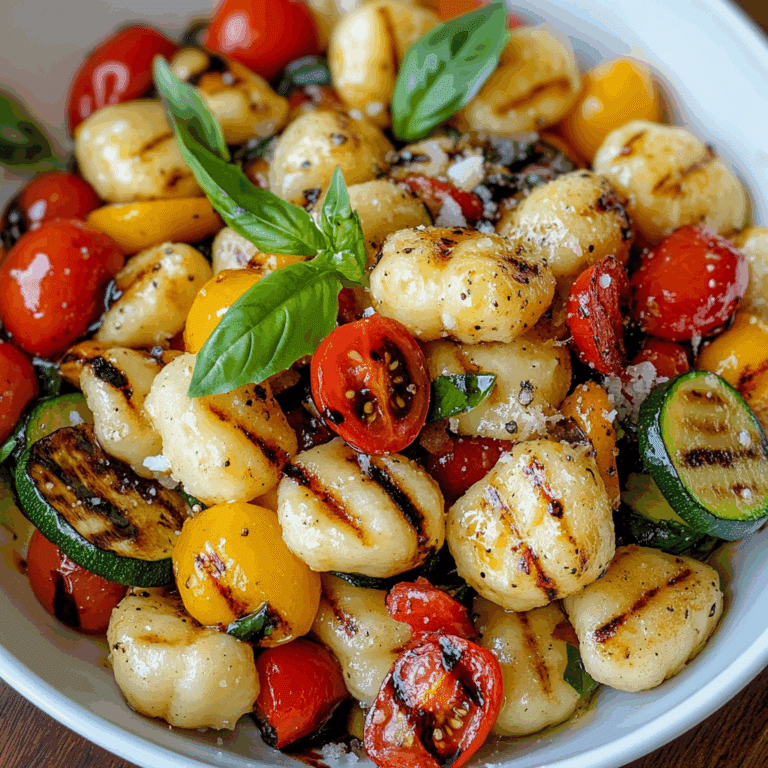Why Minestrone Soup Is Perfect for Cozy Nights

If you’re looking for a warm, nourishing dish that feels like a hug in a bowl, Minestrone Soup is absolutely your go-to recipe. Bursting with hearty vegetables, beans, and vibrant herbs, this soup offers layers of rich flavor and satisfying textures that make it perfect for cozy nights. Whether you’re winding down after a busy day or craving something wholesome and comforting, minestrone soup wraps up everything wonderful about home-cooked dinners in one delightful bowl.
Why You’ll Love This Recipe
- Wholesome nutrition: Packed with vegetables, beans, and grains, it’s a nutrient-rich meal that fuels your body.
- Versatile and flexible: Easily adapts to whatever veggies or proteins you have on hand.
- Hearty and filling: The combination of beans, pasta, and vegetables keeps you full and satisfied.
- Rich in flavor: Layers of herbs, garlic, and broth create a savory, comforting taste profile.
- Perfect for any season: Light enough for spring, hearty enough for chilly nights.
Ingredients You’ll Need
The beauty of minestrone soup lies in its simplicity and the vibrant mix of ingredients that each bring their own magic. Every veggie, bean, and herb contributes not only depth in flavor but also delightful texture and color to the dish.
- Olive oil: For sautéing vegetables and adding a subtle fruity richness.
- Onion and garlic: The aromatic base that brings warmth and depth.
- Carrots and celery: Classic soup vegetables offering sweetness and crunch.
- Zucchini or summer squash: Adds tender, fresh notes and a lovely green hue.
- Tomatoes (canned or fresh): Provide acidity and a vibrant tomatoey backdrop.
- White beans or kidney beans: Deliver protein and creamy texture.
- Vegetable broth: The savory liquid that ties everything together.
- Small pasta shapes: Like ditalini or elbow macaroni, for that classic, chewy bite.
- Fresh herbs (basil, parsley): Brighten the soup and add freshness.
- Salt and pepper: Essential for seasoning to taste.
Variations for Minestrone Soup
One of the best parts about minestrone soup is how easy it is to tailor to your liking, whether you want to switch up veggies, accommodate dietary needs, or try new flavor twists.
- Makes it vegan: Stick with vegetable broth and skip cheese toppings for a fully plant-based meal.
- Add meats: Include diced chicken, sausage, or pancetta for extra protein and heartiness.
- Swap pasta for grains: Use quinoa or barley instead of pasta for a gluten-free or different-texture option.
- Spice it up: Add red pepper flakes or a dash of hot sauce for a little kick.
- Seasonal veggies: Incorporate whatever is fresh and local, like kale in winter or peas in spring.

How to Make Minestrone Soup
Step 1: Prepare the Base
Start by heating olive oil in a large pot over medium heat. Add diced onion, garlic, carrots, and celery, cooking until softened and fragrant, about 7-8 minutes. This foundation sets the savory tone for your soup.
Step 2: Add Tomatoes and Broth
Stir in chopped tomatoes and pour in the vegetable broth, bringing the mixture to a simmer. This liquid base will blend all the vegetable flavors beautifully and add moisture.
Step 3: Mix in Vegetables and Beans
Next, add zucchini, beans, and any other chosen veggies. Let everything cook gently so that the flavors meld and vegetables become tender but still vibrant. This often takes about 15-20 minutes.
Step 4: Incorporate Pasta
Once the vegetables are cooked, stir in your selected small pasta. Cook until al dente, usually around 7 minutes, keeping a close eye so the pasta doesn’t get mushy.
Step 5: Season and Serve
Finish with salt, pepper, and fresh herbs like basil or parsley to brighten the soup. For an extra touch, sprinkle with grated Parmesan just before serving.
Pro Tips for Making Minestrone Soup
- Use fresh ingredients: Fresh veggies and herbs create the most vibrant flavors.
- Don’t overcook pasta: Add pasta near the end to keep its texture firm.
- Simmer gently: Avoid boiling vigorously to preserve vegetable integrity.
- Adjust thickness: If the soup is too thick, add more broth or water to reach your preferred consistency.
- Rest before serving: Letting the soup sit for 10 minutes helps flavors marry.
How to Serve Minestrone Soup
Garnishes
A spoonful of grated Parmesan cheese or a drizzle of good-quality olive oil immediately transforms the soup, adding indulgence and enhanced flavor.
Side Dishes
Pair minestrone soup with crusty bread, garlic toast, or a simple side salad for a balanced, satisfying meal that’s perfect on cold evenings.
Creative Ways to Present
Serve minestrone soup in rustic bowls topped with a fresh herb sprig or in hollowed-out bread bowls for a charming, cozy presentation that wows guests.
Make Ahead and Storage
Storing Leftovers
Keep leftover minestrone in an airtight container in the refrigerator for up to 4 days. It tastes even better the next day as the flavors deepen.
Freezing
This soup freezes well; simply cool completely and pour into freezer-safe containers. Freeze for up to 3 months, then thaw overnight in the fridge before reheating.
Reheating
Reheat gently on the stove over low heat to avoid breaking down the texture of the pasta and vegetables, stirring occasionally.
FAQs
Can I use meat broth instead of vegetable broth?
Absolutely! Using chicken or beef broth can add a richer, deeper flavor if you don’t need to keep the soup vegetarian.
Is minestrone soup gluten-free?
Traditional minestrone often contains pasta, but you can easily make it gluten-free by swapping the pasta for gluten-free options or grains like quinoa.
How long does it take to make minestrone soup?
From start to finish, it typically takes about 45 minutes, making it a perfect option for a quick yet hearty meal.
Can I make minestrone soup in a slow cooker?
Yes! Simply add all the ingredients except pasta to the slow cooker and cook on low for 6-8 hours, then stir in pasta during the last 30 minutes.
What is the best way to thicken minestrone soup?
You can mash a few beans against the side of the pot or add a spoonful of tomato paste to thicken and enrich the broth naturally.
Final Thoughts
Minestrone Soup isn’t just a meal; it’s an experience of warmth, comfort, and wholesome goodness all in one bowl. It brings a beautiful fusion of flavors and textures that welcomes you home and invites you to slow down and savor each bite. So why not gather your favorite veggies, cozy up, and give this timeless classic a try tonight?





